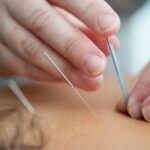Key Takeaways
- Choosing the right holster involves understanding various types to match your body type.
- Material and comfort play significant roles in the effectiveness and usability of the holster.
- Proper fit and safety measures are essential for optimal performance.
What’s the Best Holster for Your Body?
Choosing the right concealed carry holster involves more than just picking a design that looks good. Personal comfort, ease of access, and how well the holster conceals under your clothing are crucial factors in making the right choice. A 2019 Pew Research study indicated that concealed carry laws vary widely, making finding a holster that suits your needs even more important. Different concealment holsters cater to diverse body types and styles, ensuring security without compromising comfort. When selecting a holster, you must consider your daily routine, the type of clothing you typically wear, and how accessible the firearm needs to be under various circumstances.
Understanding Holster Types
There are several types of holsters available: inside-the-waistband (IWB), outside-the-waistband (OWB), shoulder holsters, ankle holsters, and pocket holsters. Each type has its own benefits and drawbacks, affecting how you wear them and what body types they are best suited for.
- IWB: This holster fits inside your waistband and is excellent for concealment but can be uncomfortable for some. It’s known for its discretion but may require purchasing a half-size larger pants to fit comfortably.
- OWB: Outside-the-waistband holsters offer more comfort and quick access to the firearm but may require more clothing to conceal effectively. This type is popular among those who prioritize ease of draw and minimal discomfort.
- Shoulder Holsters: These holsters are ideal for those who prefer to carry in a more balanced manner but require a jacket or coat to conceal. They distribute the weight evenly across your shoulders, which can benefit extended wear.
- Ankle Holsters: Useful for carrying a backup weapon and can be easily concealed with longer pants. However, they may only be practical for some, especially those who need quick-draw access.
- Pocket Holsters: Great for small pistols and casual carry but limited by pocket size. They provide convenience but require deep and sturdy pockets to hold the holster securely.
Choosing the right type often comes down to your personal lifestyle and specific needs for carrying your firearm.]
Considerations for Different Body Types
People come in all shapes and sizes, and so should holsters. A slim individual may find an IWB holster comfortable, whereas someone with a larger frame may prefer an OWB. According to a National Center for Biotechnology Information study, comfort and concealment are highly subjective and vary from person to person. Consider factors like waist size, clothing style, and daily activities when choosing a holster.
In addition to body shape, weight distribution plays a significant role. Individuals with larger midsections might find certain IWB holsters uncomfortable and may benefit more from shoulder holsters or OWB options. Conversely, people with slender frames may prefer IWB holsters for their smaller, less intrusive profile.
Additionally, the size of the firearm itself needs to be considered. Full-size handguns may be more challenging to conceal and carry comfortably all day, making them better suited for OWB or shoulder holsters. In contrast, compact or subcompact pistols might fit well in IWB or pocket holsters.
Material Matters
Holsters are made from various materials like leather, Kydex, and nylon. Leather molds to your body over time, providing a customized fit, but can be bulky. It also requires a break-in period and regular maintenance to retain its quality. For instance, Kydex offers rigidity and easy drawing, which ensures a consistent draw every time. Still, it may feel less comfortable against the skin. Nylon provides flexibility and comfort, being lightweight and often padded, but might not offer as much retention for the firearm.
How to Properly Wear Your Holster
The way you wear your holster affects not only comfort but also safety. Ensure your holster is positioned for a quick draw yet remains hidden. Practice drawing and reholstering to build muscle memory and enhance your confidence in using it in real-world situations. Fit is critical, and adjusting the holster’s positioning can significantly affect comfort and accessibility.
Consider factors such as your dominant hand, your usual stance, and common movements throughout the day when positioning your holster. For instance, those who spend much of their day sitting may benefit from placing the holster slightly behind the hip in a position that does not impede natural movement.
Furthermore, incorporating a sturdy gun belt to support the holster can improve comfort and security. This keeps the holster firmly in place, preventing any shifts that might occur throughout daily activities, thereby ensuring that the firearm remains appropriately concealed and accessible.
Testing and Adjustments
Once you’ve picked a holster, testing it under different conditions is important. Wear it while sitting, walking, and even running to see how it performs. Adjust the positioning as needed to ensure optimal comfort and functionality. Different activities and clothing styles will affect how your holster feels and performs, so test it thoroughly.
Engage in various daily tasks to assess whether the holster stays in place and remains comfortable. This might include bending over, reaching up high, or climbing stairs. The holster should accommodate all these movements without causing discomfort or revealing the concealed firearm.
After an initial trial period, small adjustments are necessary. Holster positioning is highly customizable, and slight shifts can significantly improve comfort and concealment. Some holsters offer adjustable cant (angle) and ride height (depth), providing additional customization options to meet your needs.
Safety Precautions
Always ensure that your holster covers the trigger guard of your firearm to prevent accidental discharge. Regularly check your holster for wear and tear and replace it if it shows deterioration. Safety is paramount; maintaining your holster in good condition is essential to ensure its proper function.
Additionally, practice drawing and holstering your firearm in a controlled environment to develop safe handling habits. This practice helps identify potential issues with your holster or positioning that could lead to unsafe conditions. Emphasize keeping your finger off the trigger until you’re ready to fire, and ensure your firearm is unloaded during practice sessions.
Furthermore, be mindful of your surroundings and any potential legal considerations concerning carrying a concealed weapon. Stay informed about local laws and regulations to ensure responsible and lawful concealed carry practices.
Final Thoughts
Choosing the right concealed carry holster is a nuanced process that requires consideration of your body type, preferred carry style, and safety needs. Take time to find the perfect fit, and your holster will serve you well. With proper care, the right holster can provide discreet protection that suits your lifestyle and body type. Remember, the ultimate goal is to ensure personal safety while maintaining comfort and effective concealment.
By following these guidelines and continually engaging in responsible concealed carry practices, you’ll be well-equipped to navigate the complexities of discreet protection. Your ideal holster should support your firearm securely, enhance your confidence, and fit seamlessly into your daily routine.







